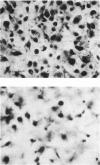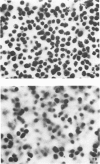Abstract
Chemotactic factors for malignant neoplastic cells can be generated from either the fifth component of complement or from leukotactic fractions obtained from zymosanactivated serum. Digestion of the fifth component of complement by trypsin initially produced leukotactic activity, but as digestion continues, leukotactic activity is lost and tumor cell chemotactic activity is generated. Separation of the leukotactic activity is lost and tumor cell chemotactic activity is generated. Separation of the leukotactic activity and tumor cell chemotactic activity can be accomplished by gel filtration or isoelectric focusing. Gel filtration indicates that the tumor cell chemotactic factor has a molecular weight of approximately 8000 daltons. Tumor cell chemotactic activity can be generated by trypsinizing the leukotactic fractions isolated by isoelectric focusing. The responses of cultured Walker tumor cells or of Walker ascites tumor cells are dose-dependent and truly chemotactic. Cells from a murine malignant lymphoma do not respond to the complement-derived chemotactic factor for tumor cells, indicating that not all malignant cells share this functional property.
Full text
PDF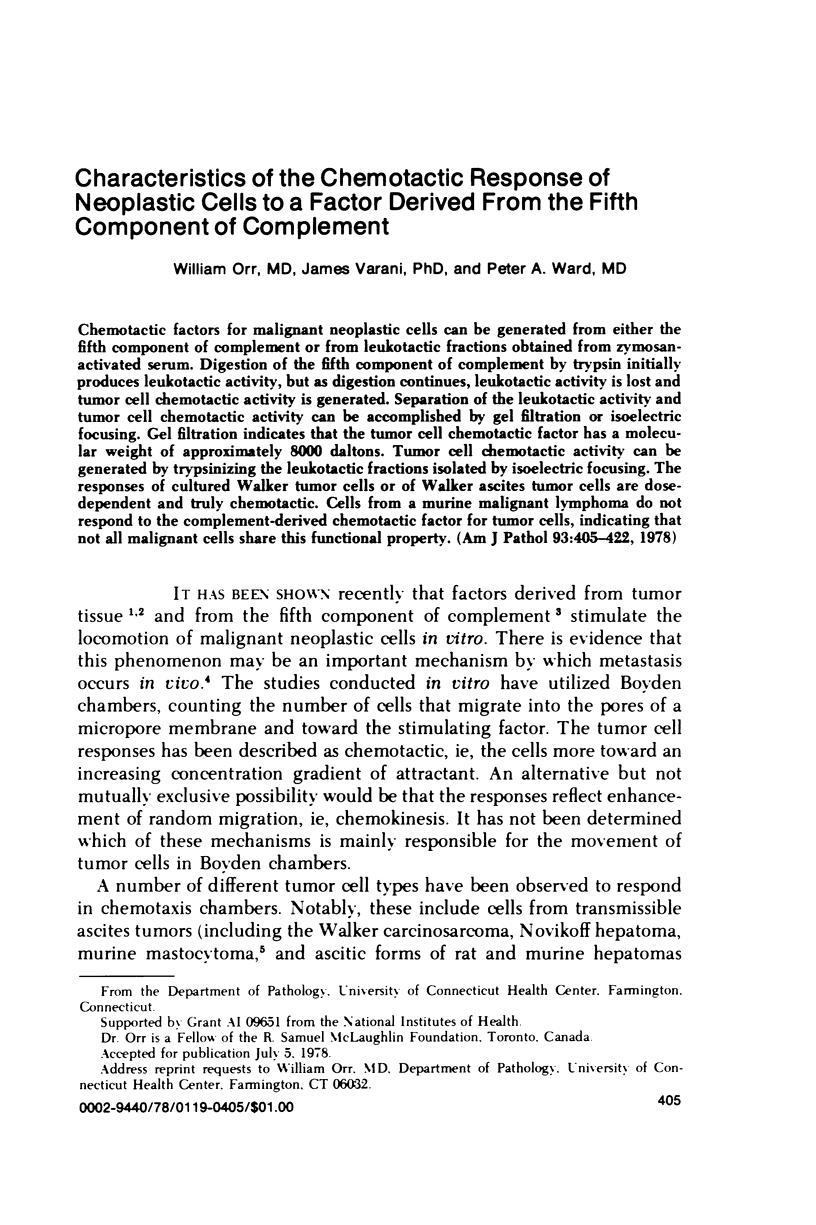
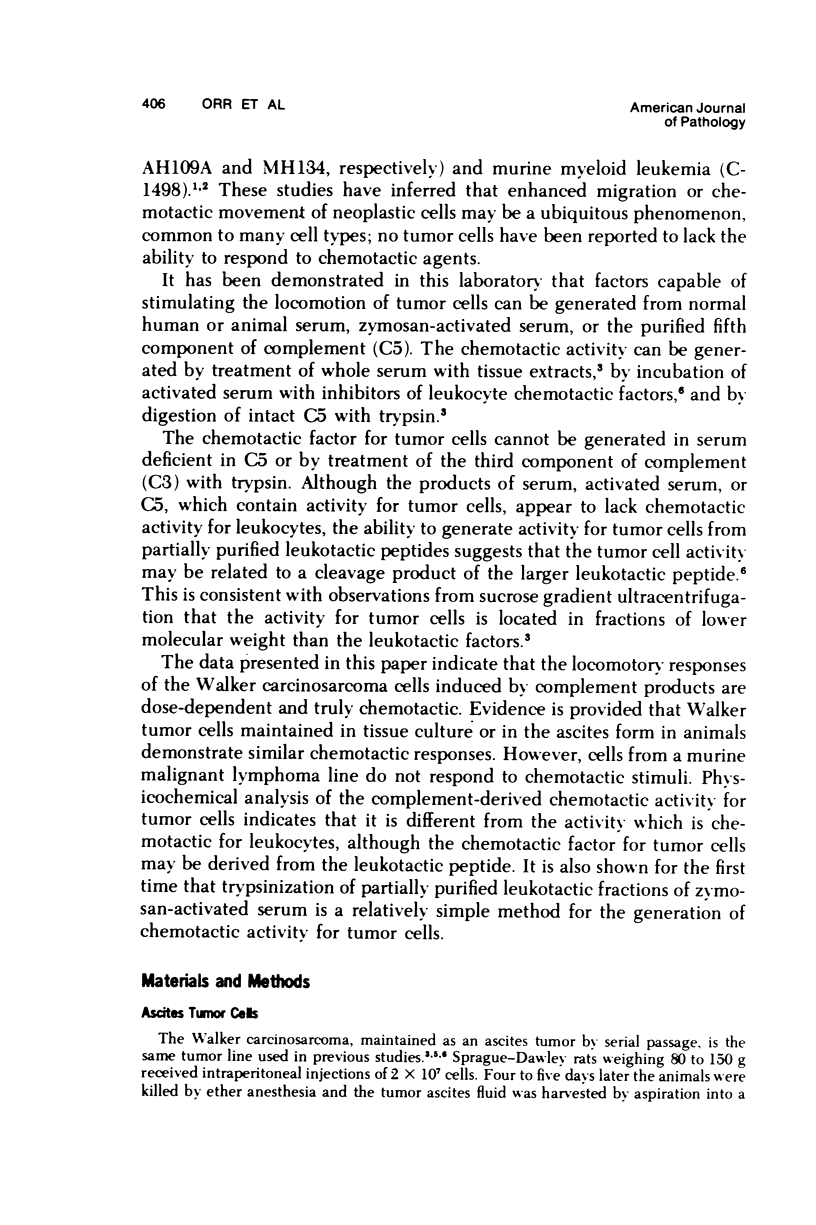
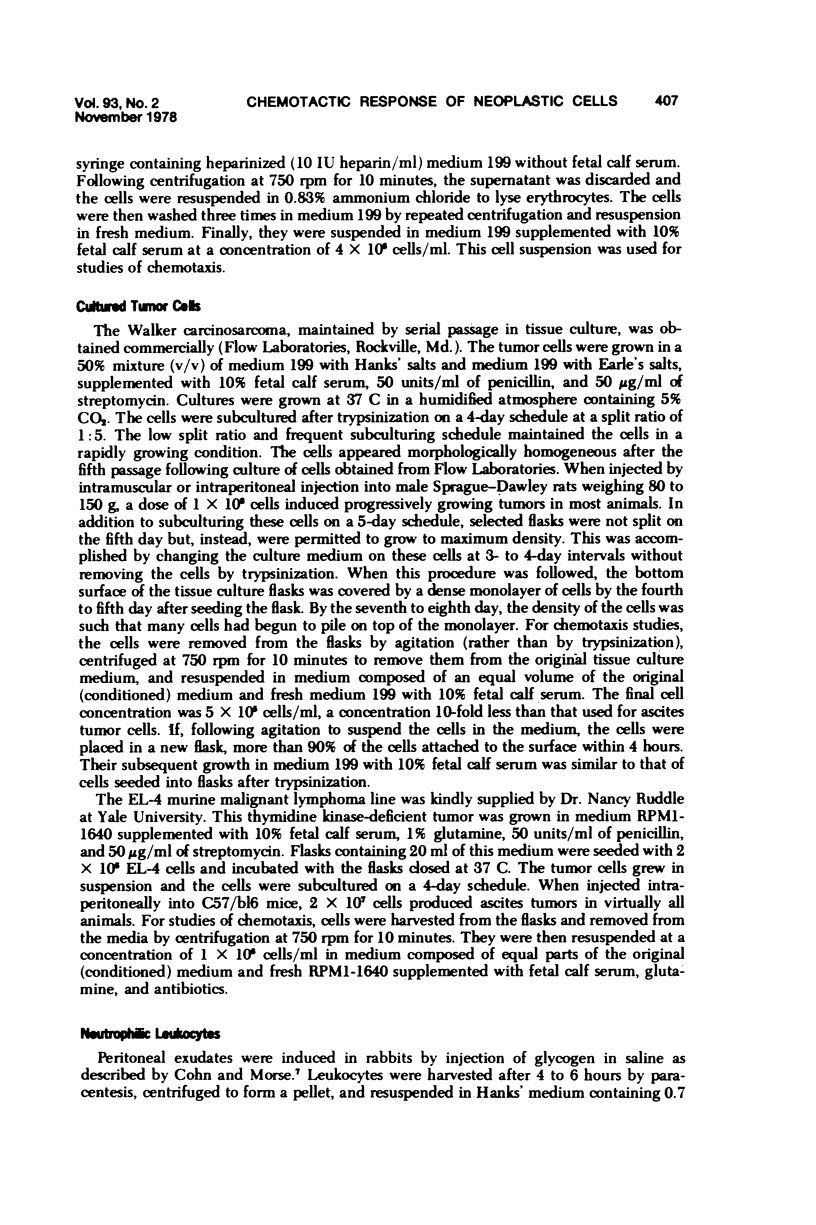
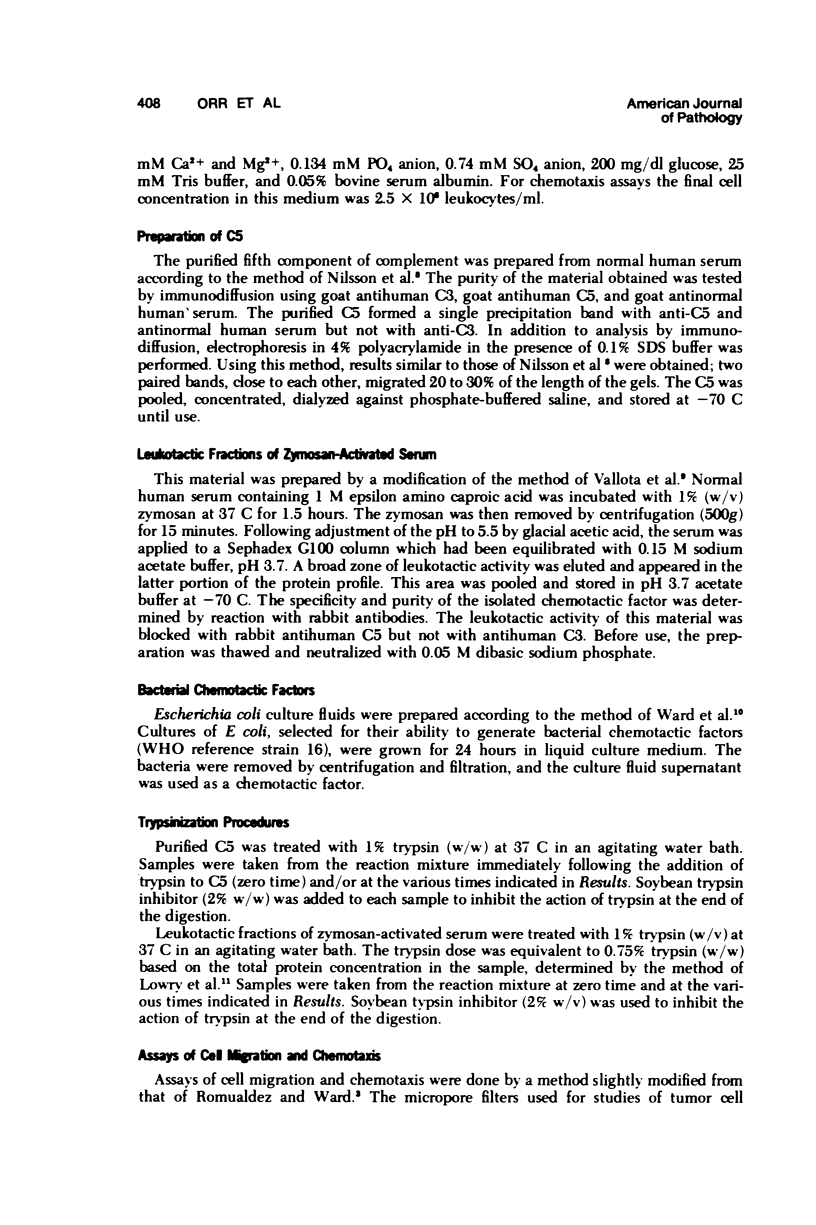
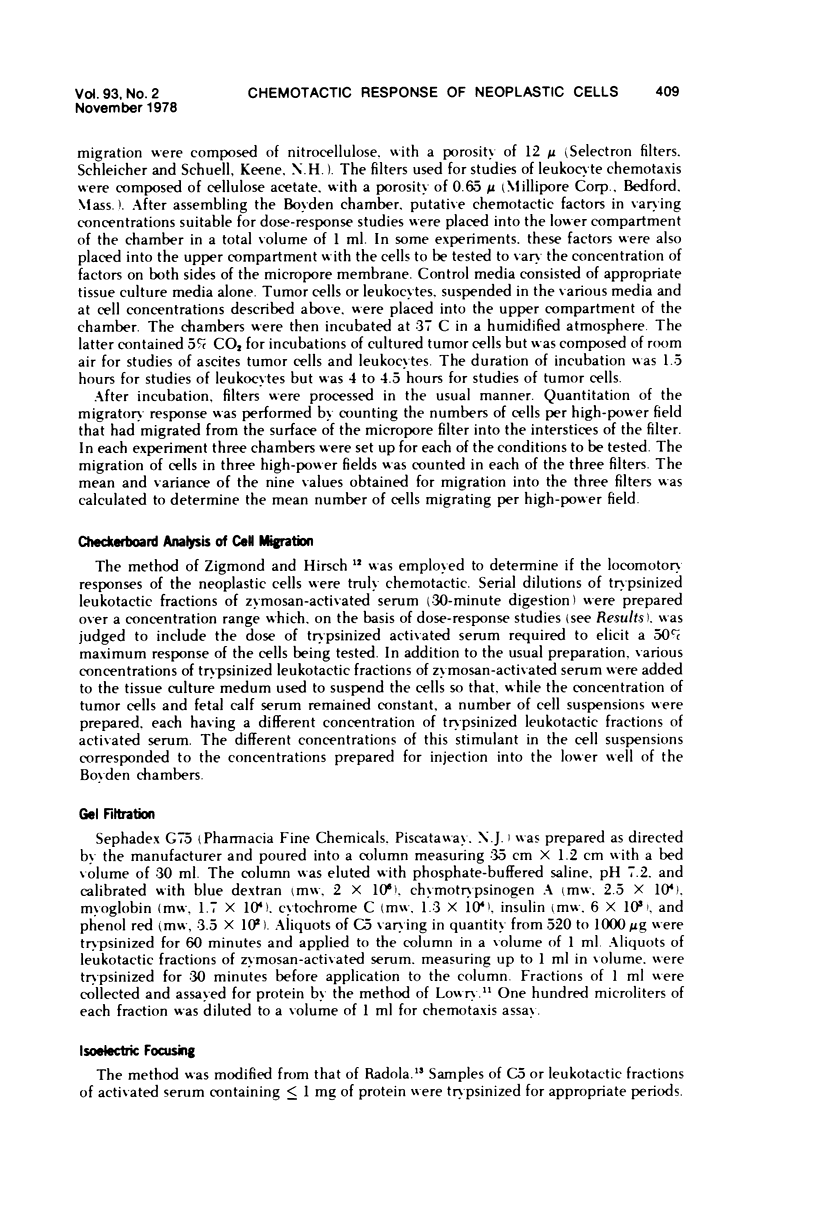
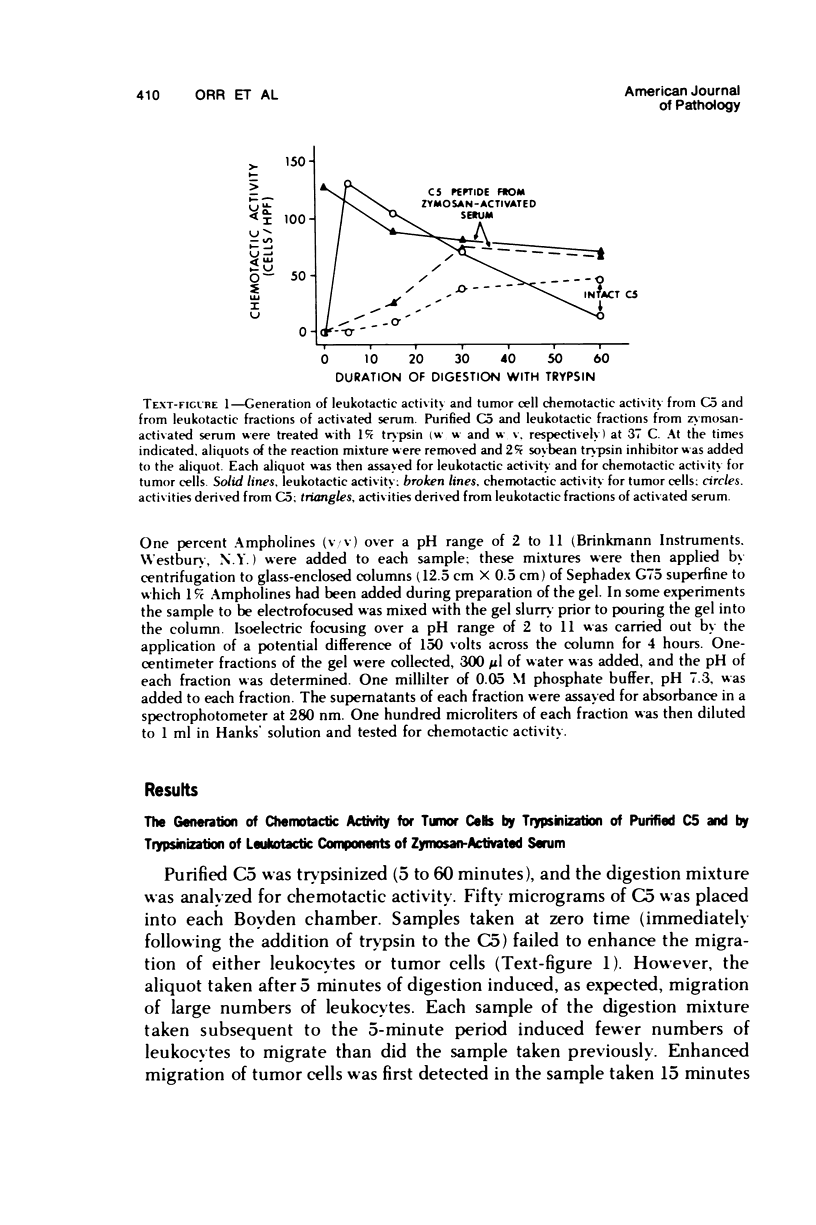
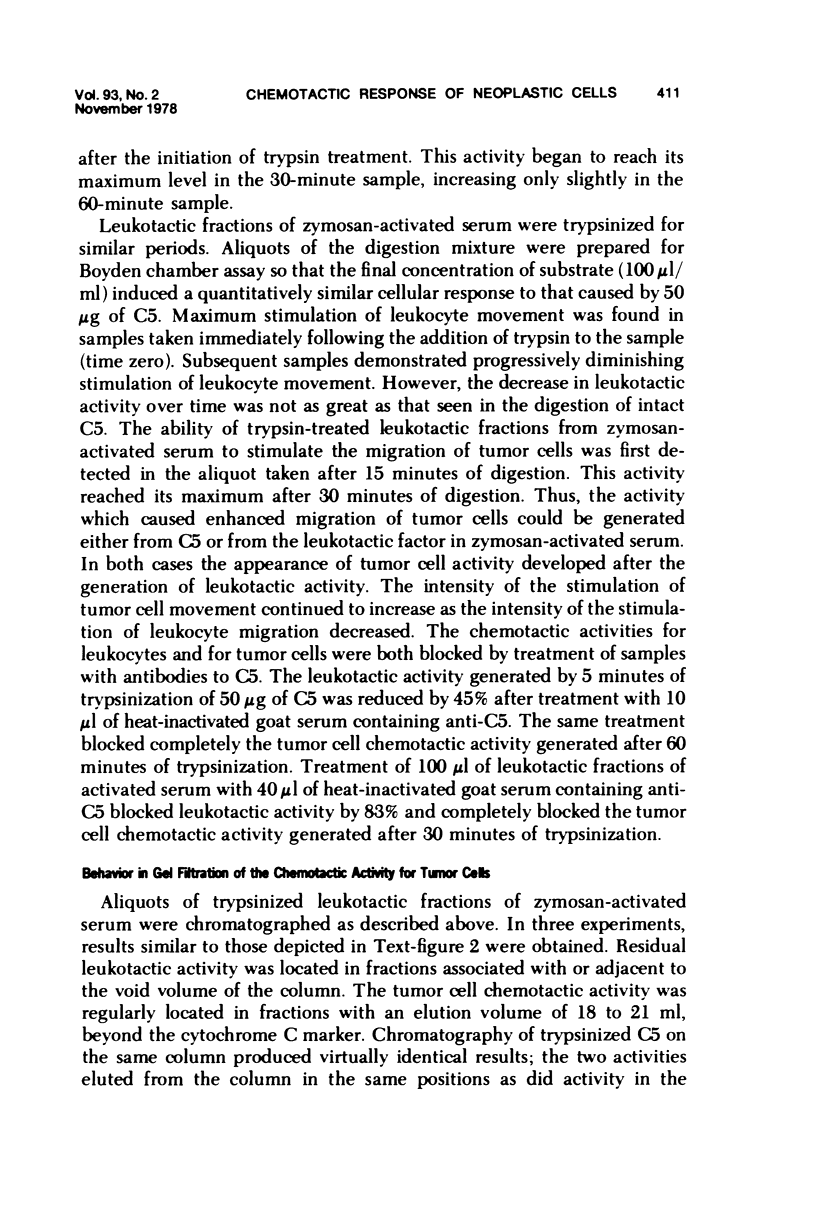
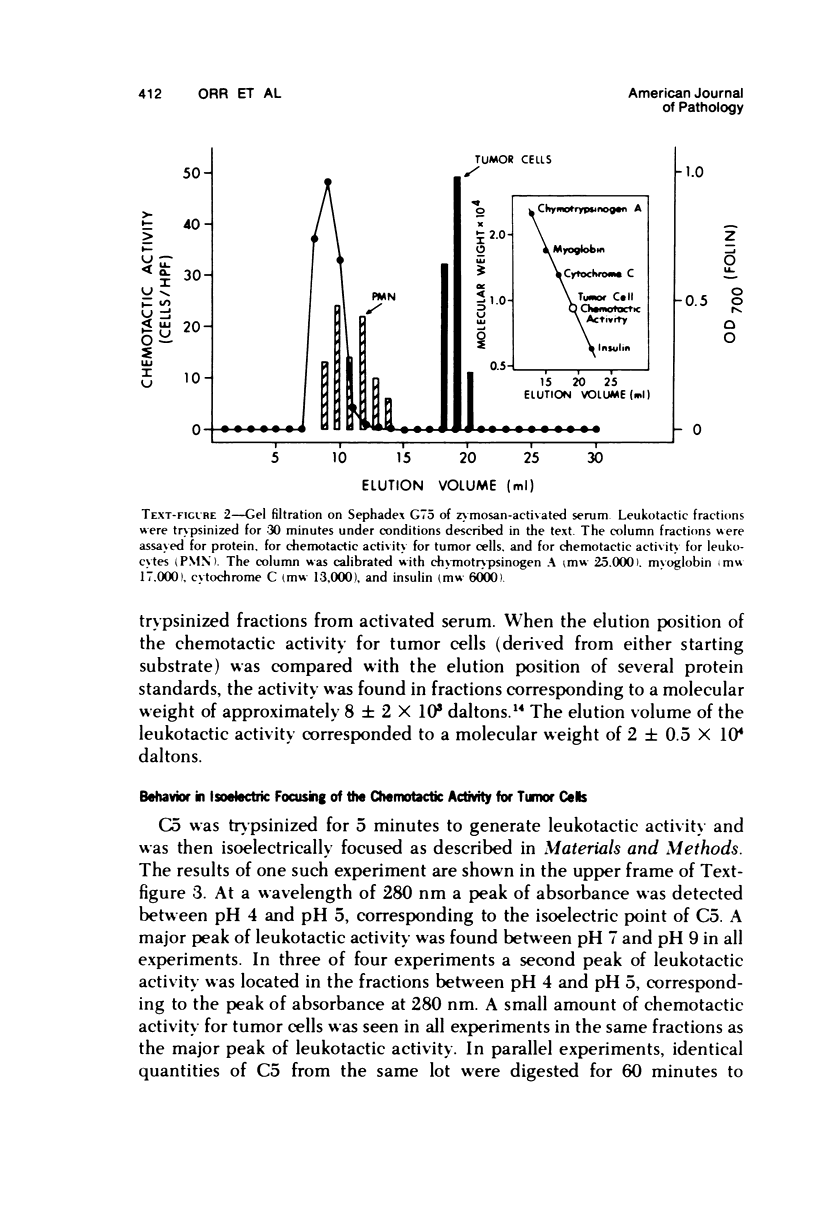
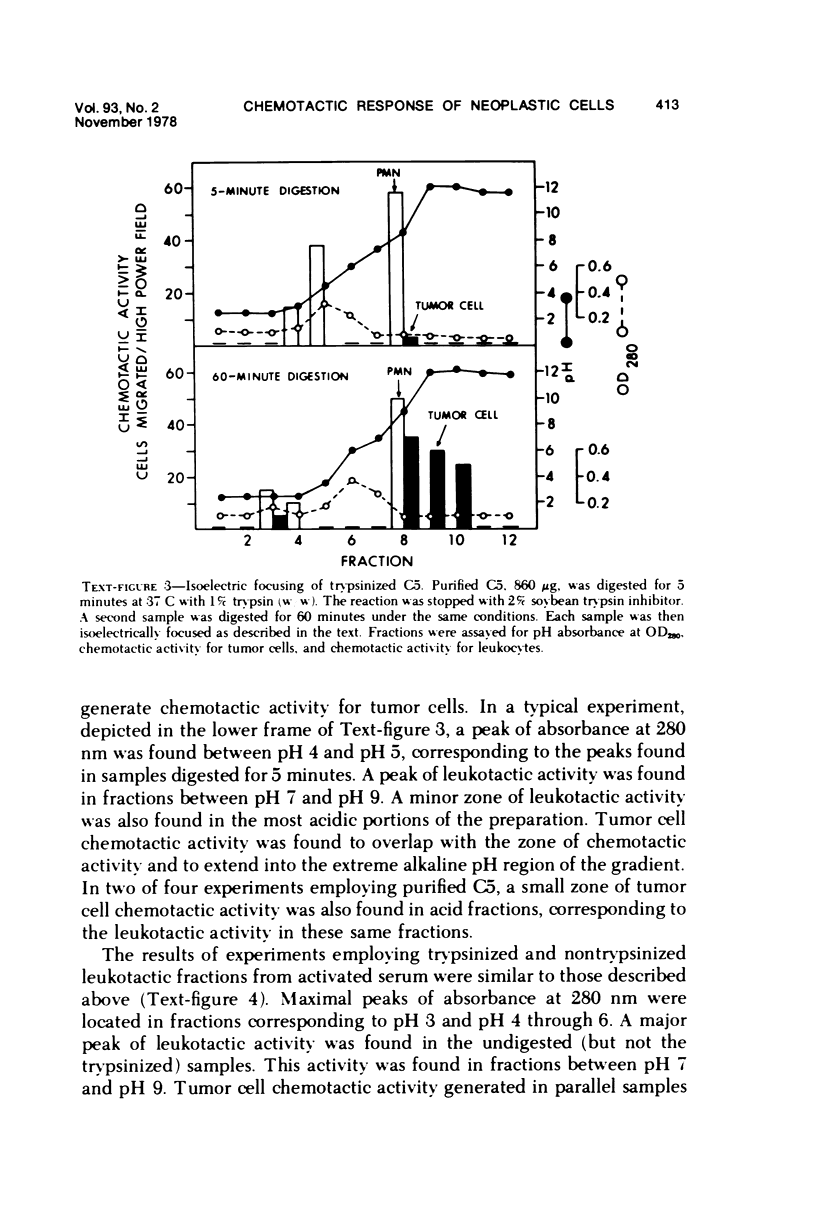

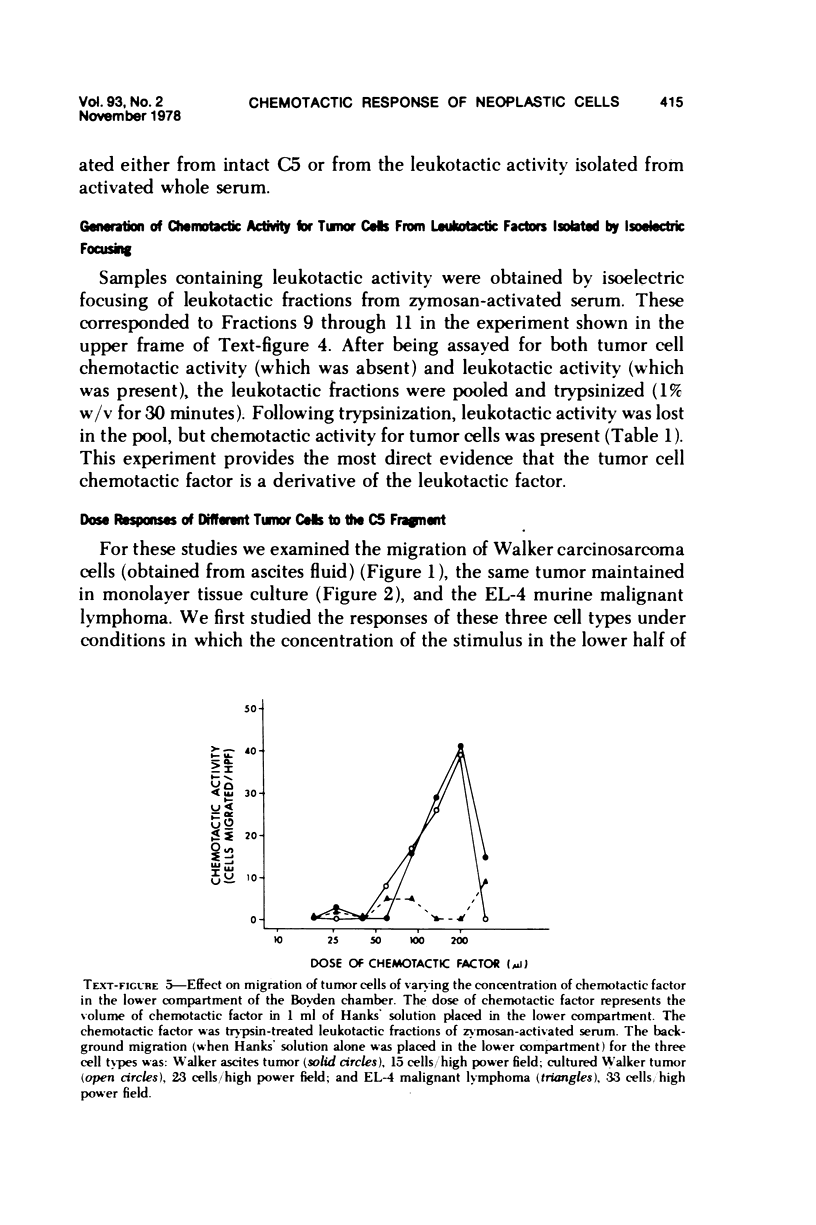
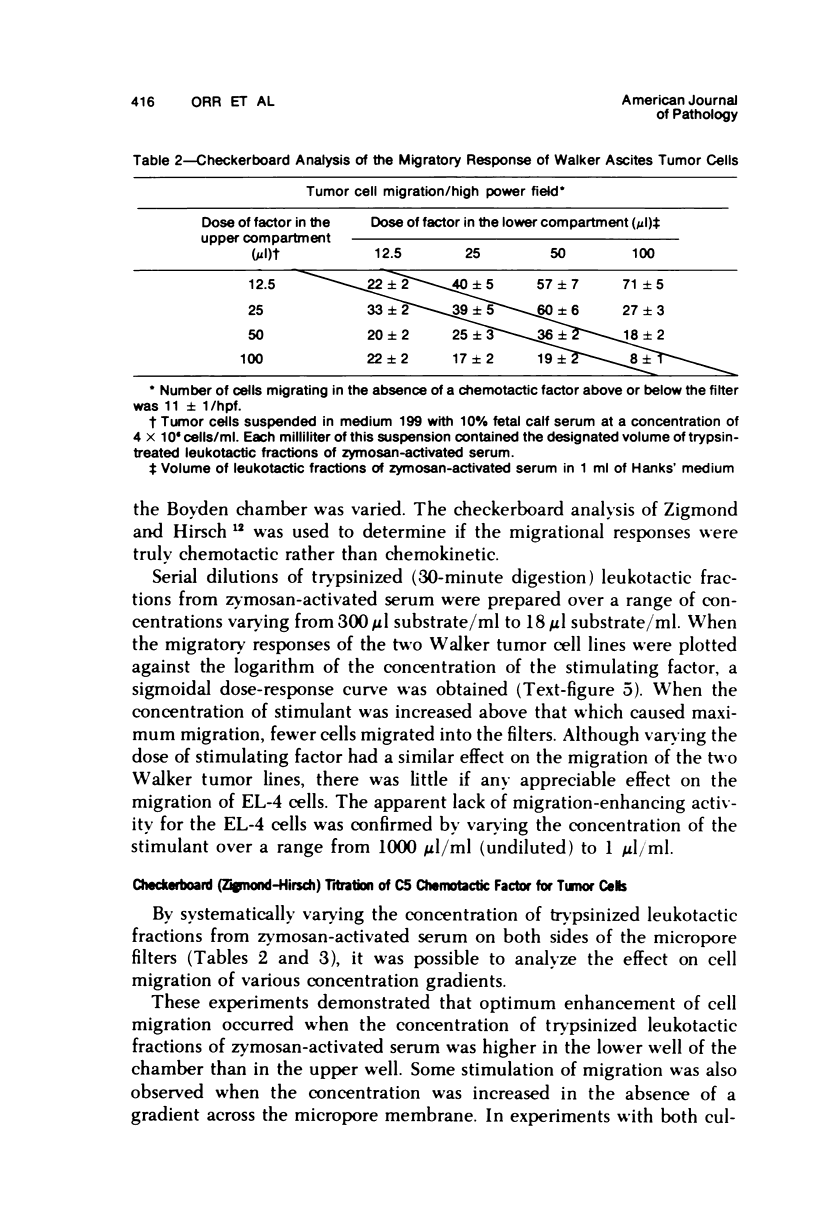
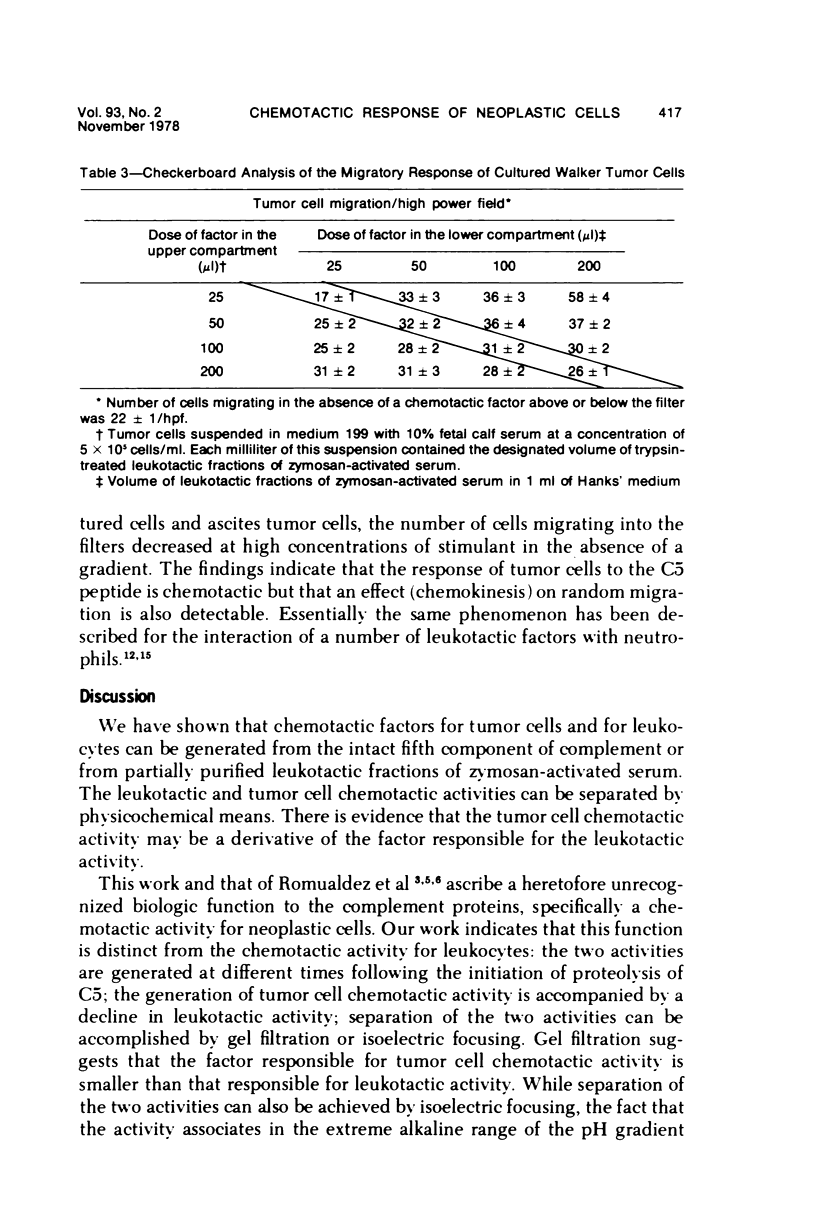
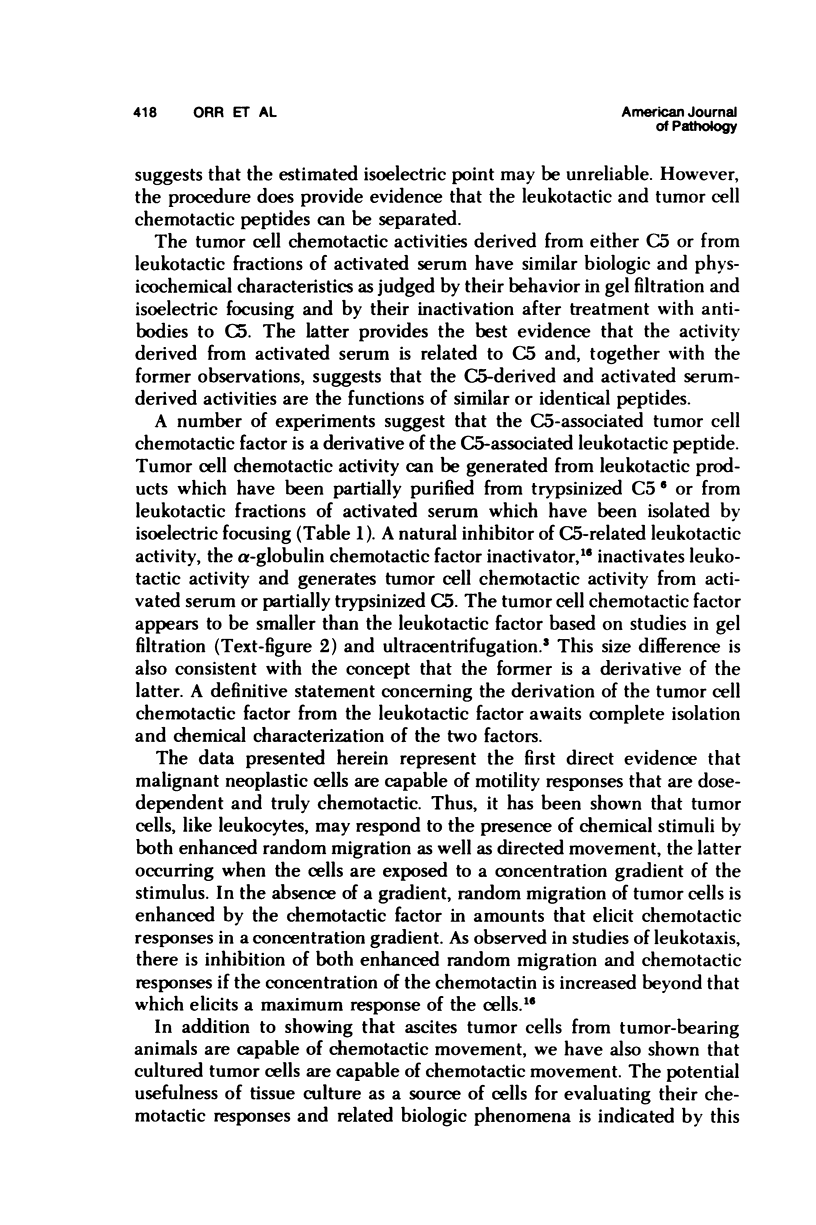
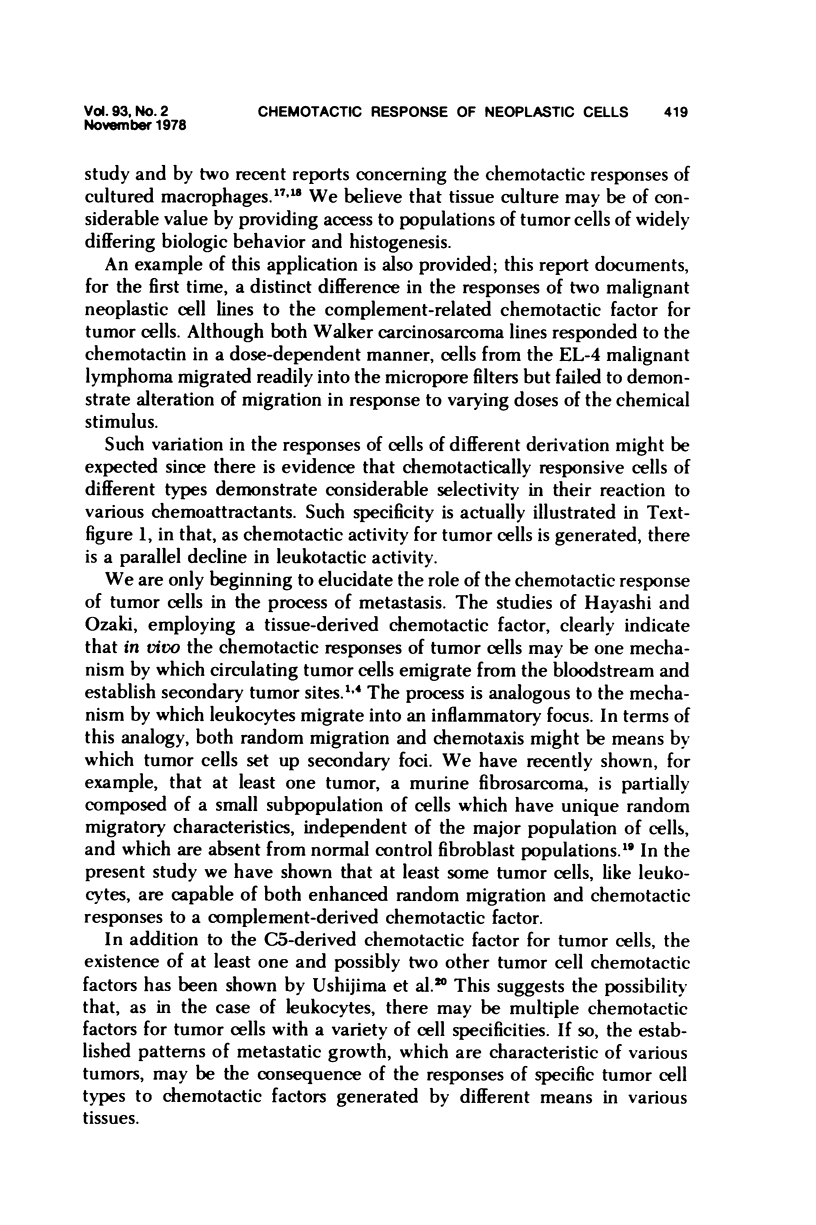
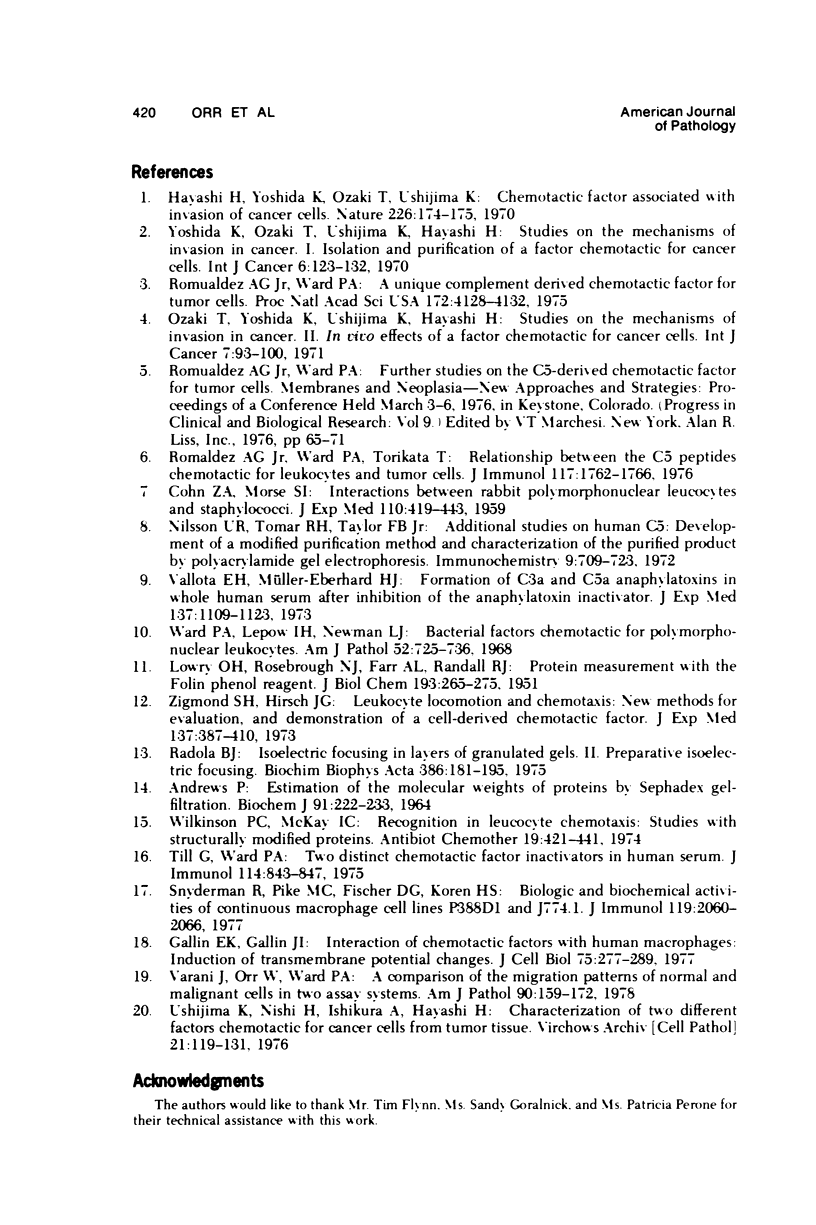
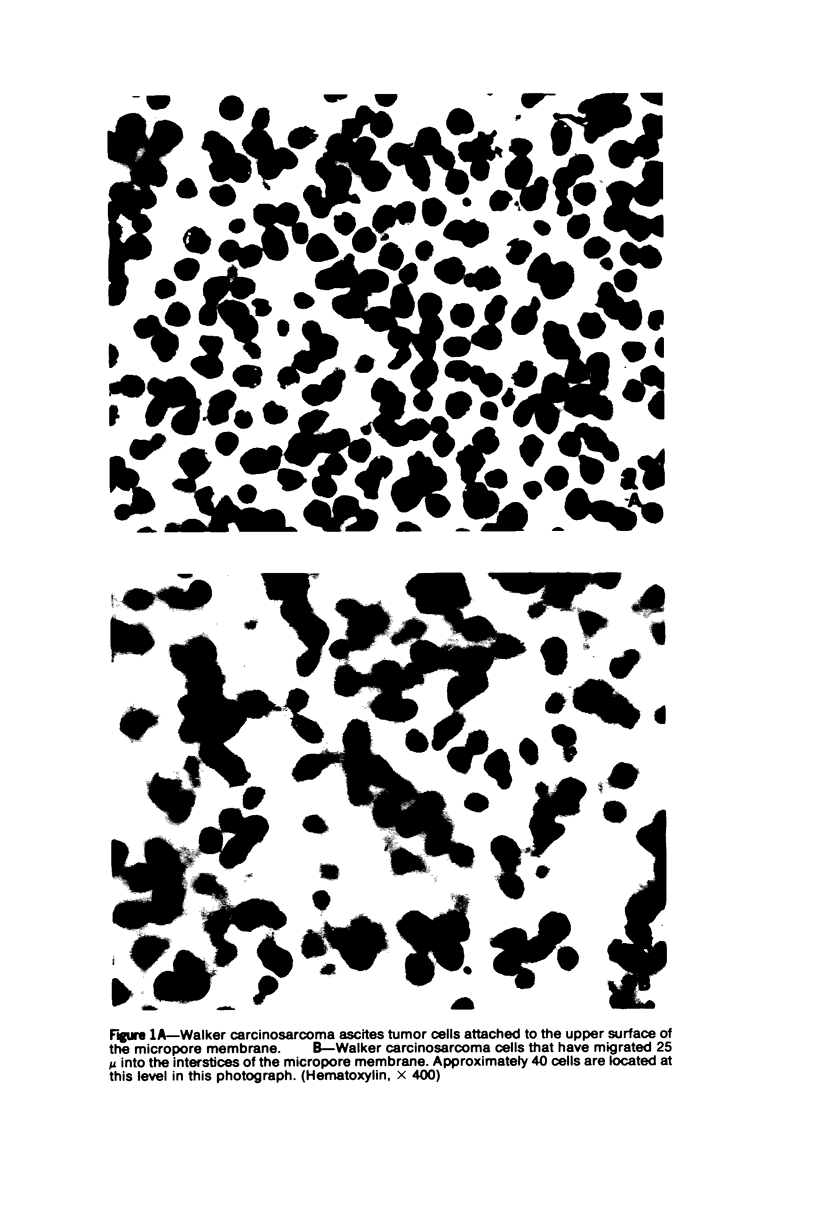
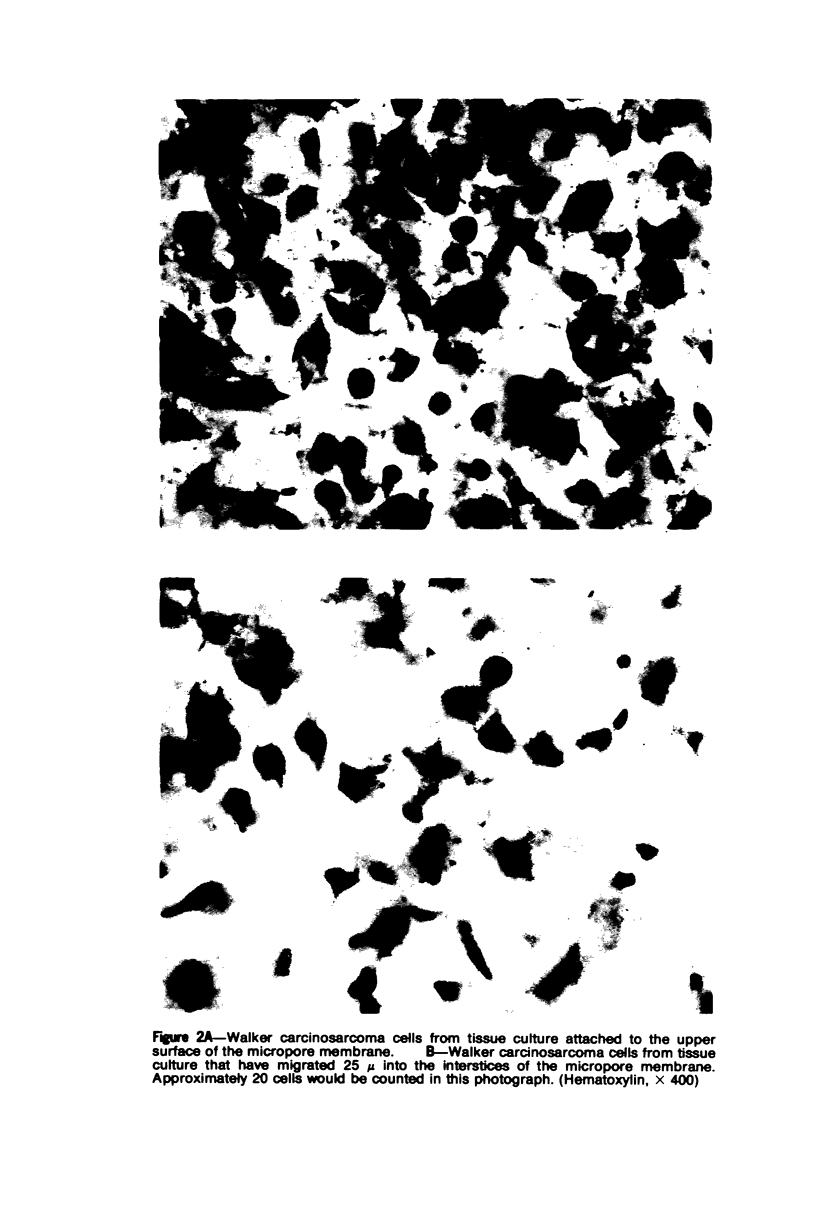
Images in this article
Selected References
These references are in PubMed. This may not be the complete list of references from this article.
- Andrews P. Estimation of the molecular weights of proteins by Sephadex gel-filtration. Biochem J. 1964 May;91(2):222–233. doi: 10.1042/bj0910222. [DOI] [PMC free article] [PubMed] [Google Scholar]
- COHN Z. A., MORSE S. I. Interactions between rabbit polymorphonuclear leucocytes and staphylococci. J Exp Med. 1959 Sep 1;110:419–443. doi: 10.1084/jem.110.3.419. [DOI] [PMC free article] [PubMed] [Google Scholar]
- LOWRY O. H., ROSEBROUGH N. J., FARR A. L., RANDALL R. J. Protein measurement with the Folin phenol reagent. J Biol Chem. 1951 Nov;193(1):265–275. [PubMed] [Google Scholar]
- Nilsson U. R., Tomar R. H., Taylor F. B., Jr Additional studies on human C5: development of a modified purification method and characterization of the purified product by polyacrylamide gel electrophoresis. Immunochemistry. 1972 Jul;9(7):709–723. doi: 10.1016/0019-2791(72)90015-8. [DOI] [PubMed] [Google Scholar]
- Ozaki T., Yoshida K., Ushijima K., Hayashi H. Studies on the mechanisms of invasion in cancer. II. In vivo effects of a factor chemotactic for cancer cells. Int J Cancer. 1971 Jan 15;7(1):93–100. doi: 10.1002/ijc.2910070111. [DOI] [PubMed] [Google Scholar]
- Radola B. J. Isoelectric focusing in layers of granulated gels. II. Preparative isoelectric focusing. Biochim Biophys Acta. 1975 Mar 28;386(1):181–195. doi: 10.1016/0005-2795(75)90258-5. [DOI] [PubMed] [Google Scholar]
- Snyderman R., Pike M. C., Fischer D. G., Koren H. S. Biologic and biochemical activities of continuous macrophage cell lines P388D1 and J774.1. J Immunol. 1977 Dec;119(6):2060–2066. [PubMed] [Google Scholar]
- Till G., Ward P. A. Two distinct chemotactic factor inactivators in human serum. J Immunol. 1975 Feb;114(2 Pt 2):843–847. [PubMed] [Google Scholar]
- Ushijima K., Nishi H., Ishikura A., Hayashi H. Characterization of two different factors chemotactic for cancer cells from tumor tissue. Virchows Arch B Cell Pathol. 1976 Aug 11;21(2):119–131. doi: 10.1007/BF02899149. [DOI] [PubMed] [Google Scholar]
- Varani J., Orr W., Ward P. A. A comparison of the migration patterns of normal and malignant cells in two assay systems. Am J Pathol. 1978 Jan;90(1):159–172. [PMC free article] [PubMed] [Google Scholar]
- Ward P. A., Lepow I. H., Newman L. J. Bacterial factors chemotactic for polymorphonuclear leukocytes. Am J Pathol. 1968 Apr;52(4):725–736. [PMC free article] [PubMed] [Google Scholar]
- Wilkinson P. C., McKay I. C. Recognition in leucocyte chemotaxis. Studies with structurally modified proteins. Antibiot Chemother (1971) 1974;19:421–441. [PubMed] [Google Scholar]
- Yoshida K., Ozaki T., Ushijima K., Hayashi H. Studies on the mechanisms of invasion in cancer. I. Isolation and purification of a factor chemotactic for cancer cells. Int J Cancer. 1970 Jul 15;6(1):123–132. doi: 10.1002/ijc.2910060116. [DOI] [PubMed] [Google Scholar]
- Zigmond S. H., Hirsch J. G. Leukocyte locomotion and chemotaxis. New methods for evaluation, and demonstration of a cell-derived chemotactic factor. J Exp Med. 1973 Feb 1;137(2):387–410. doi: 10.1084/jem.137.2.387. [DOI] [PMC free article] [PubMed] [Google Scholar]



